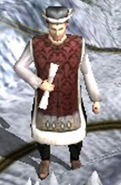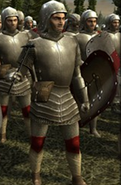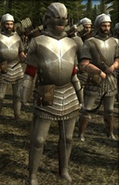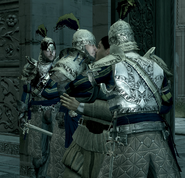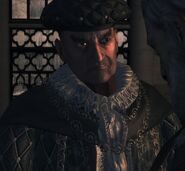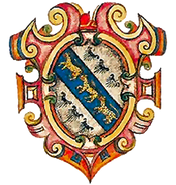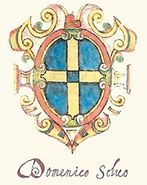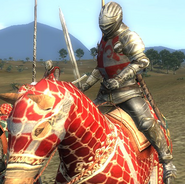
The Republic of Venice (697-1797), also called La Serenissima, was a state originating from the northeastern city of Venice. The republic was one of the world's biggest trading powers for the duration of the Middle Ages, with their merchants trading silk and spice from the Orient. Venice was built on 101 islands, and held much more territory outside of Italy, such as Crete, Cyprus, Morea (southern Greece), Croatia, and parts of Asia Minor.
History[]
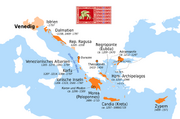
Venice was founded in 697 when the Byzantine Empire's province of Venetia elected their own leader confirmed by Constantinople called a "Doge", and the first holder of this title was Paolo Lucio Anafesto. The republic was originally centered at Eraclea, and in 742 moved to Malamocco. After only 68 years, Venice was made the new and permanent capital of the republic. Venice was ruled by the House of Selvo for most of its early existence, and they extended their borders to include Dalmatia, many outlying Greek islands, Crete, and Cyprus, among other toeholds in many other areas.
In 1203 and 1204 Venetian Doge Enrico Dandolo sacked Constantinople and founded the Latin Empire and Nicaean Empire, among other states. Dandolo took the treasure of Constantinople and the Venetian army laid siege to Nicaea, capturing it from the Byzantines. However, Venetian rule ended in 1260, when Michael VII of Byzantium reconquered Constantinople from the Latins. The Venetians' massive trading fleets would continue to sail through the Orient, albeit without the key trading centre of Constantinople, and they mainted many trade posts along the Mediterranean Sea trade routes.
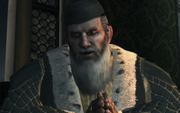
Venice was the sight of a civil war between the Knights Templar and Hashshashin during the Venetian Conspiracy, in which the House of Barbarigo poisoned Doge Giovanni Mocenigo and took power as the new line of Doges. Merchant Emilio Barbarigo, Consigliere Carlo Grimaldi, Doge Marco Barbarigo, and State Inquisitor Silvio Barbarigo were the key men in the picture pulling the strings, and all of them were killed from 1486-1488, ending the plot. The Barbarigos remained in power, holding onto their titles of Doges, except without the influence of the House of Borgia and the Knights Templar. In the 1490s Doge Agostino Barbarigo entered a war with the Ottoman Empire, and although he helped to drive the French out of Italy in the First Italian War, he was met by disaster in the disastrous 1499 Battle of Zonchio. Barbarigo's defeat and his mysterious death in 1501 weakened the Most Serene Republic, who were on-and-off allies and enemies of the Kingdom of France in the Italian Wars.
In the 1700s Venice maintained its empire in Venetia (northeastern Italy) and the southern portion of Greece called "Morea", with the city of Patras as its capital, but they fought the Ottoman Empire in Greece and the French in northern Italy. Constantly under the threat/protection of the Holy Roman Empire, Venice played little a role in global politics, unlike their previous centuries of rule in Italy. During the course of the 1790s they fought against France in the Italian Campaign of the French Revolutionary Wars, and Venice itself was occupied by Napoleon Bonaparte in 1797, and after the Treaty of Campo Formio, Venice was ceded to Austria as part of the peace agreements.
Politics[]
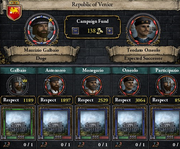
The Venetian houses in 770
As a republic, Venice was not ruled by kings, but rather by elected officials. In medieval politics, however, merchant republics were ruled differently. The ruling class of Venice consisted of five families of patricians, with the families rising and falling and different families occupying seats in the ruling class. The House of Orsoleo was the first family to rule over Venice (ruling uninterrupted from 726 to 755), but the House of Gaulo briefly overthrew them. Politics in Venice were dominated by intrigues, marriages, assassinations, and feuds between families, similar to the modern-day American Mafia. Several doges were assassinated or blinded and overthrown, and the office of Doge was one that was worth killing for. Venetian families not only competed with murder, but also with trade routes. They could build trade ports along major trade routes to help their income, and this could lead to internecine trade wars.

